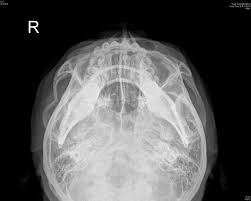How Can A Zygomatic Arch Fracture Be Repaired Weeks After Injury?
Q: Dr. Eppley, I was involved in a fight almost 7 weeks ago and suffered a comminuted zygomatic arch fracture. The result is that the arch is depressed about 4 to 5mms. I was unaware of the fracture and thought it was just some bruising as I did not suffer from any black eye or bleeding. By the time I realized and went to hospital I was told that as 3 weeks had passed the bones would have begun to heal and surgery is risky but they would have to break the healed arch and reset. I now have one side of the face little out of balance with the other side. Not sure what route I can take or you would recommended in place of a full arch reinstatement to its normal position.
 A: The zygomatic arch is a very thin sliver of bone that connects the cheek bone with the temporal bone in from of the ear. It is very much like an arched bridge spanning the distance between the two. Because it is thin and has a bowed outward shape, it can be broken right in the maximal point of convexity; These fractures can occur as an inverted V or it can be broken into several pieces. (comminuted) Repair of isolated zygomatic arch fractures is almost done by closed reduction, pushing the depressed bone segments outward trying to restore the convexity. While often successful, it is not uniformly so (particularly in communited fractures) because there is no structural support (like a plate and screws) added to the fracture reduction to stabilize it into its original arched shape. While there are open approaches that can achieve such rigid one fixation, this involves a coronal scalp approach from above which is a bit extreme given the small fracture that it is.
A: The zygomatic arch is a very thin sliver of bone that connects the cheek bone with the temporal bone in from of the ear. It is very much like an arched bridge spanning the distance between the two. Because it is thin and has a bowed outward shape, it can be broken right in the maximal point of convexity; These fractures can occur as an inverted V or it can be broken into several pieces. (comminuted) Repair of isolated zygomatic arch fractures is almost done by closed reduction, pushing the depressed bone segments outward trying to restore the convexity. While often successful, it is not uniformly so (particularly in communited fractures) because there is no structural support (like a plate and screws) added to the fracture reduction to stabilize it into its original arched shape. While there are open approaches that can achieve such rigid one fixation, this involves a coronal scalp approach from above which is a bit extreme given the small fracture that it is.
At three weeks after surgery, the bone is far from healed and can be easily manipulated. Again it is a thin bone and would actually take many months to heal and probably only do so by fibrous union in many cases. So this does make it possible to attempt a closed reduction if one so desired and would be no less successful now that it would have dbeen ays after the injury
But at this point, there are also other options to improve better facial symmetry over the depressed arch. Options include injectable fat grafting with or without closed reduction and to wait three months and insert a zygomatic arch implant of the thickness needed to restore facial symmetry.
Dr. Barry Eppley
Indianapolis, Indiana

North Meridian Medical Building
Address:
12188-A North Meridian St.
Suite 310
Carmel, IN 46032
Contact Us:
Phone: (317) 706-4444
WhatsApp: (317) 941-8237
